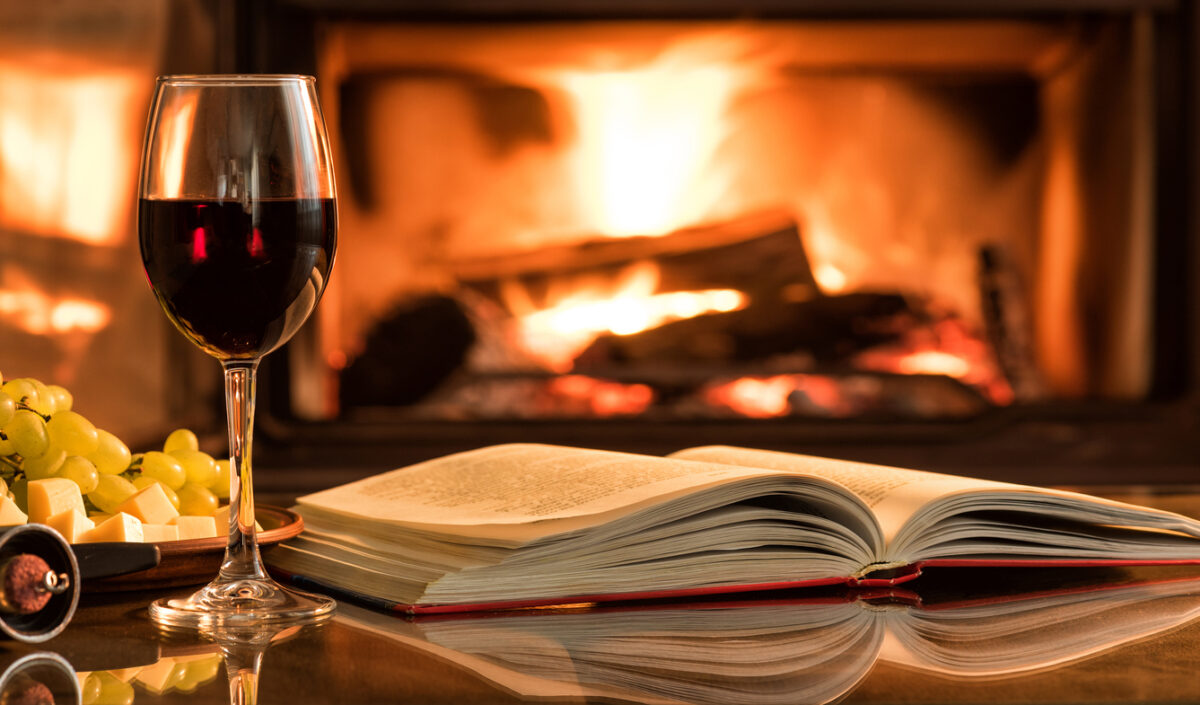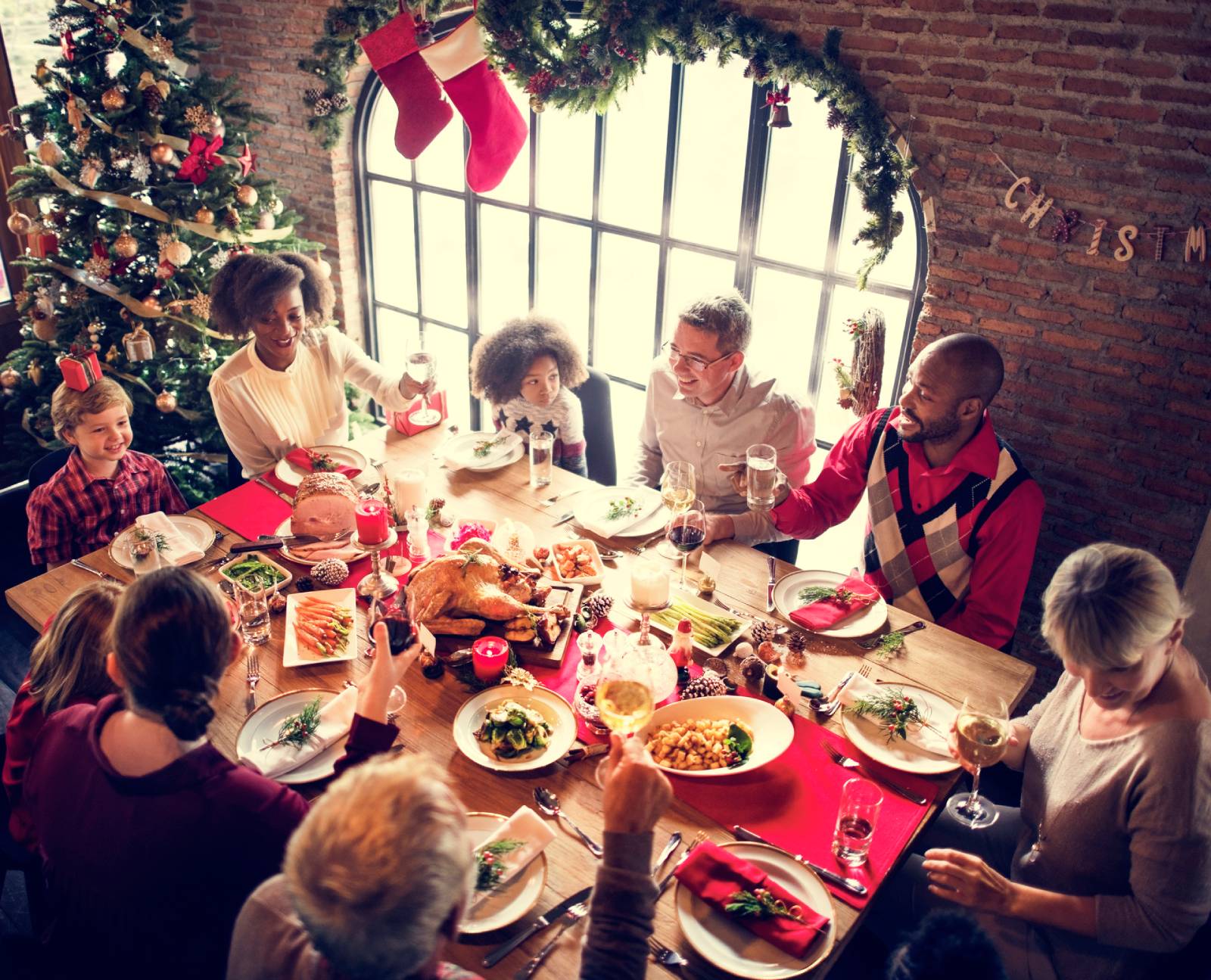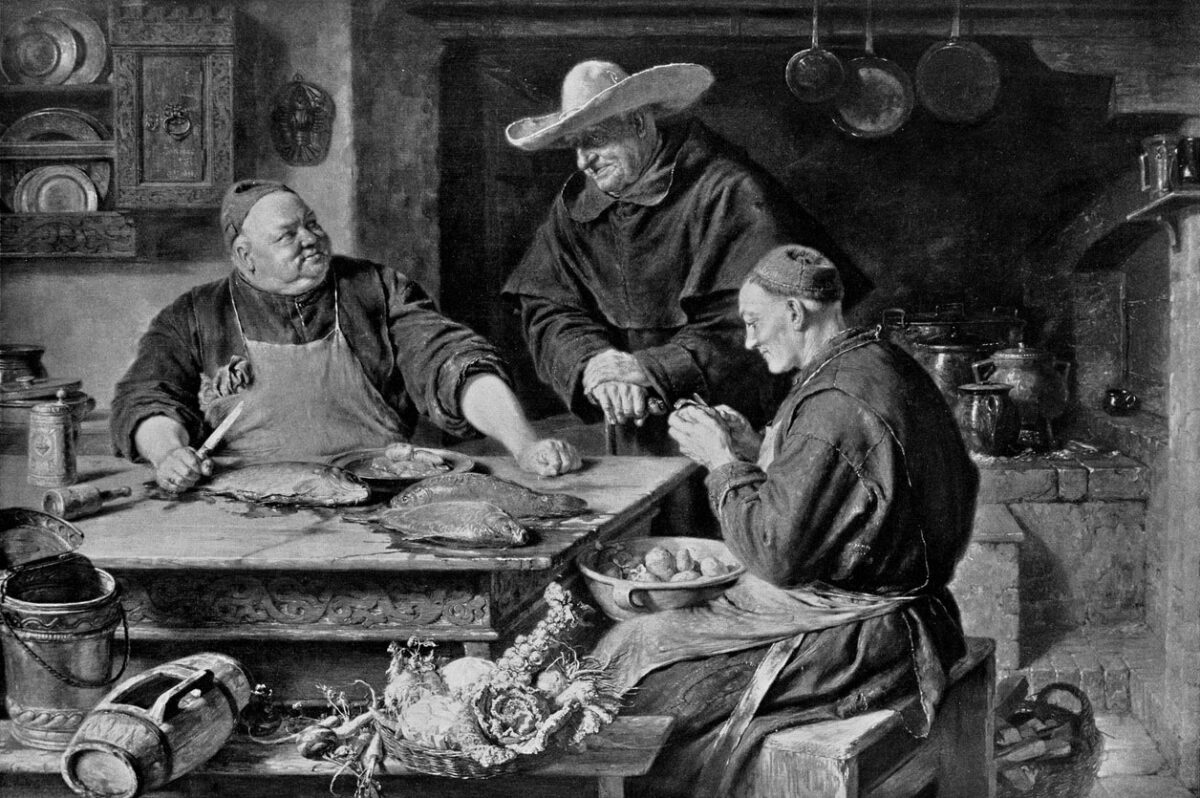Christmas food traditions from around the world
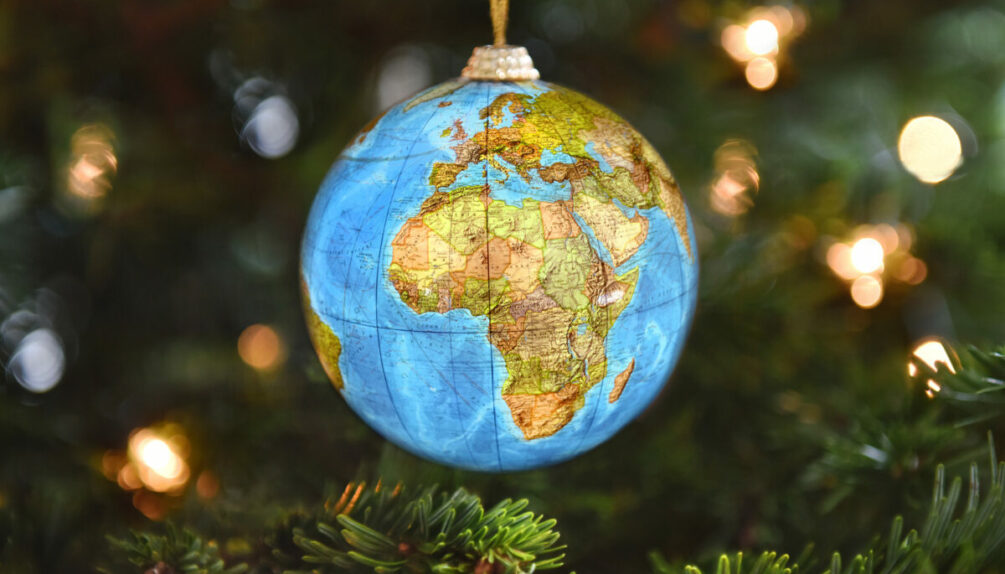
Christmas and the food we eat to celebrate it are typically a very personal affair. Five houses on the same street can have five completely different food traditions, and usually, each one believes their household does it best. That said, there are overarching themes when it comes to Christmas food traditions in the UK. Most of us spend December eagerly awaiting a dinner plate laden with roast potatoes, stuffing, and vegetables, even if the recipes and preparation of such dishes don’t match our neighbours’. The same can be said for Christmas food traditions from around the world.
As we head into the festive period, those who celebrate Christmas will begin stocking up fridges and food cupboards ahead of the big day. But festive food preparations will look vastly different across countries. Here’s a look at some of the world’s Christmas food traditions.
A meatless 12 course dinner in Poland
Despite having a relatively high meat consumption per capita for 364 days of the year, Christmas dinner in Poland is traditionally a meat-free affair. Christmas Eve is marked by fasting – and this is broken only at nightfall, when the first stars are seen in the sky. This is when the main Christmas meal is consumed.
Another religious nod comes in the number of courses in a traditional Polish Christmas dinner. To represent the number of disciples, a whopping 12 courses are customarily prepared. Among these dishes are usually a beetroot soup known as barszcz, mushroom soup, several kinds of fish like herring and carp, sauerkraut, cabbage rolls and – of course – pierogi. Sweet offerings towards the end of a meal can usually include fruit compotes and poppy seed cakes.

Polish beetroot soup, known as barszcz, forms an important part of the country’s meat-free celebrations
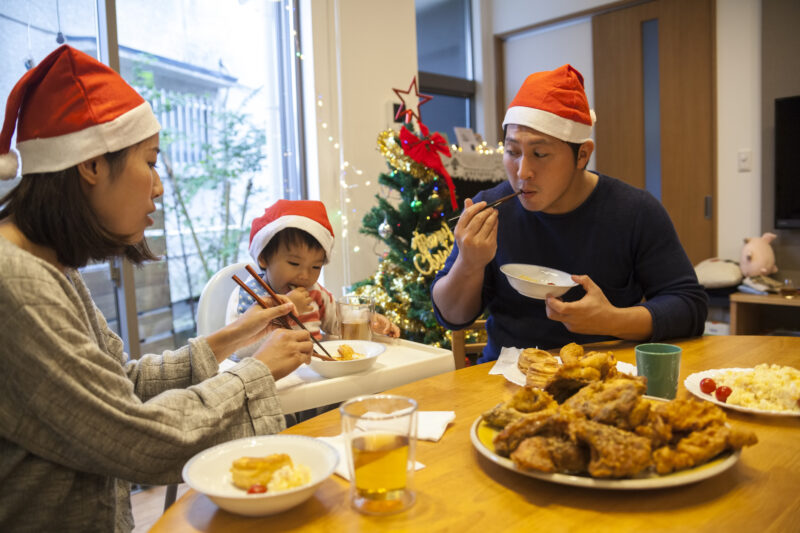
A Japanese family enjoying fried chicken as part of their Christmas celebrations
Left: Polish beetroot soup, known as barszcz, forms an important part of the country’s meat-free celebrations
Right: A Japanese family enjoying fried chicken as part of their Christmas celebrations
Pre-ordered fried chicken in Japan
Thanks to some highly successful business decisions in the 1970s, many Japanese people celebrate Christmas by tucking into fried chicken from KFC. It is said that this tradition was born when Takeshi Okawara, the manager of Japan’s first ever KFC, awoke from a dream with the idea to sell a ‘party barrel’ style sharing bucket for families to enjoy together on the big day.
Japan still has a relatively small Christian population, so where Christmas is celebrated, it is usually done so in a more secular way – similar to how the UK might celebrate Valentine’s Day. Nevertheless, demand for Christmas KFC remains high. According to the company, sales of Christmas packages account for up to a third of yearly profits in the country, and it’s advised to pre-order from the local restaurant several weeks in advance to avoid disappointment.
A summertime feast in Australia
Being in the Southern Hemisphere, Australians celebrate Christmas just as their summer season is beginning. So while you’ll no doubt see mince pies and Christmas pudding (which were brought over and popularised during British colonisation) the warm weather is reflected in many of their festive food choices. Prawns and other seafood usually feature heavily, often prepared on a barbecue.
Another Australian Christmas mainstay is the pavlova – fresh fruit and light meringue make this dessert feel both summery and festive. Additionally you may find that Australians opt for an earlier Christmas brunch or lunch, to avoid eating during the hottest parts of the day.
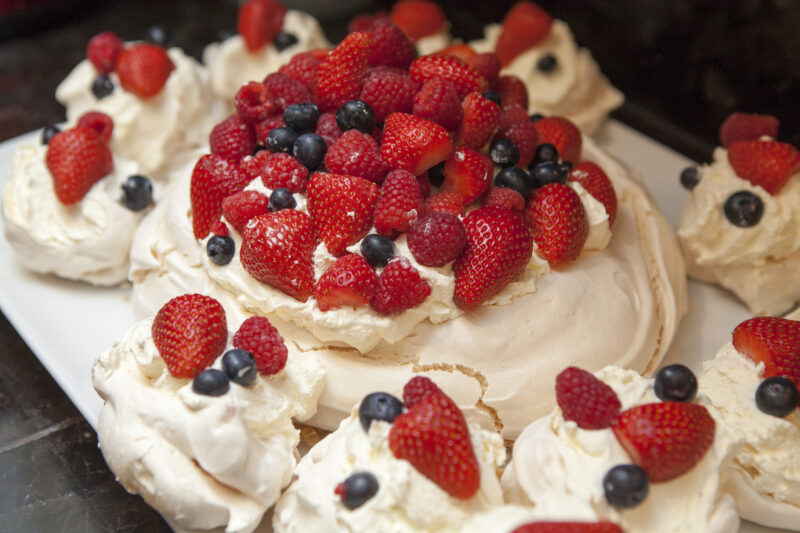
A fresh fruit pavlova is a mainstay of sunshine-filled Aussie Christmases
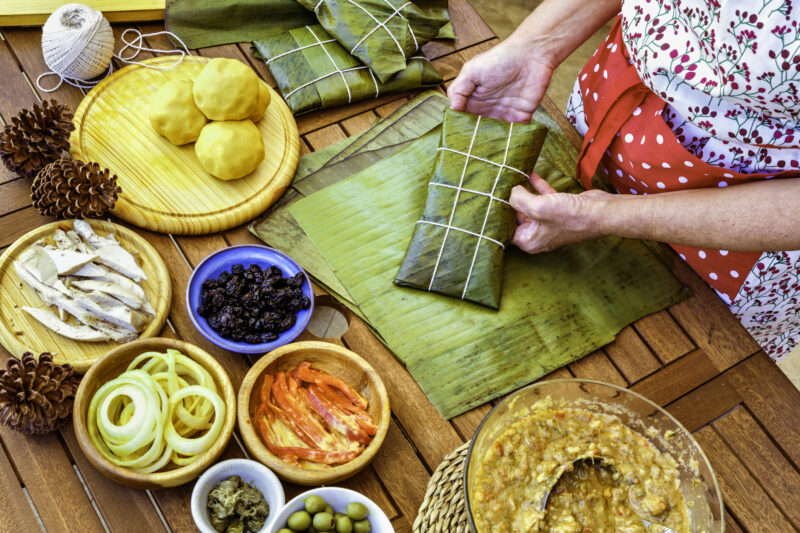
Venezuelan hallacas are usually prepared by the whole family
Left: A fresh fruit pavlova is a mainstay of sunshine-filled Aussie Christmases
Right: Venezuelan hallacas are usually prepared by the whole family
Family-made beef, pork or chicken hallacas in Venezuela
For those celebrating Christmas in Venezuela, it is traditional to come together with family to prepare hallacas. Hallacas resemble tamales, but are usually reserved only for the festive period. The dish consists of corn dough stuffed with a stew of beef, pork or chicken, and other ingredients like raisins, caper and olives. The stuffed dough is then folded in plantain leaves, tied with strings and then steamed.
Another common dish is pan de jamón. This bread-based dish traditionally features sliced ham, olives and raisins, which are rolled together in a swirl before baking. Usually, the bread is left to cool almost completely before serving, to ensure a firm texture. For all dishes, being together as a family is seen as just as important as the food itself, and so there is an emphasis on everyone performing a role.
Doro wat to break 43 days of fasting in Ethiopia
A number of people that celebrate Christmas do so using the Julian calendar – and Orthodox Ethiopians are no exception. This means that their main Christmas celebration actually falls on 7 January, rather than 25 December. In Ethiopia, it is common to fast during the day from 25 November until Christmas day – some 43 days in total.
When fast is broken for Christmas dinner, Ethiopians will often celebrate with doro wat, a rich, thick and spicy chicken stew with vegetables and sometimes egg. This is usually served with injera, a type of flatbread used in place of utensils to pick up food with.
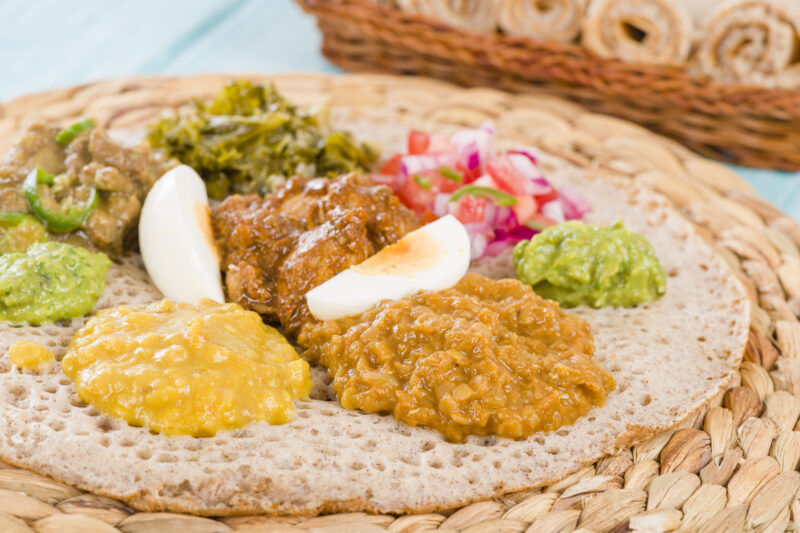
The injera flatbread on which the doro wat is usually served also serves as a utensil for eating it
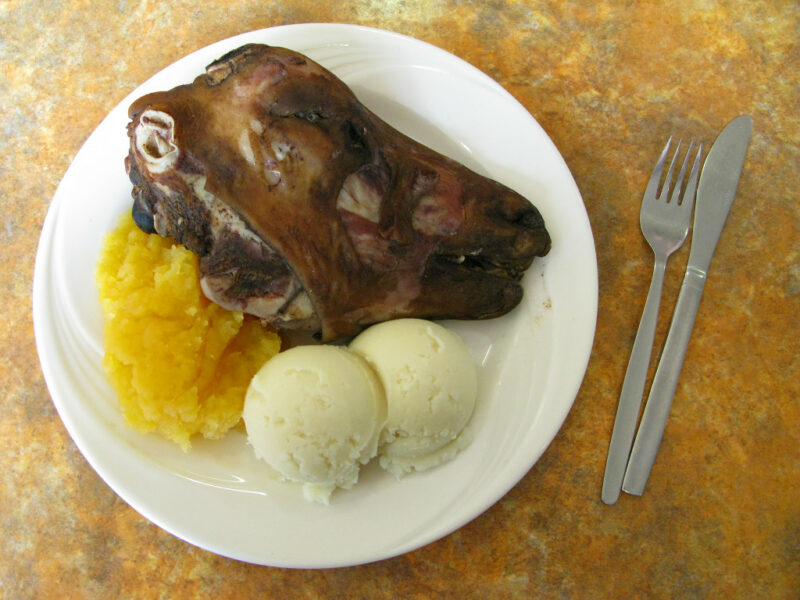
The sheep’s head in the dish, smalahove, is typically salted, smoked and steamed
Left: The injera flatbread on which the doro wat is usually served also serves as a utensil for eating it
Right: The sheep’s head in the dish, smalahove, is typically salted, smoked and steamed
A whole sheep’s head in Norway
In many Christmas dinner tables throughout Norway, the centrepiece is not a turkey, goose, or ham, but a whole sheep head. The dish is called smalahove, and involves salting, smoking and then steaming the head before serving it. Many rural parts of Norway, particularly in the west of the country, have a rich history of sheep farming, and that’s where this tradition comes from.
Most report that smalahove tastes like regular mutton, which itself has a rich, game-like taste. According to tradition, the ears and eyes are usually eaten first as they are the fattiest areas which are best eaten warm. The rest of the meat is usually consumed from front to back. In some versions of the dish, the brain is cooked inside the skull.
Gifting peace apples in China
Like Japan, China has a small Christian population, so its Christmas food traditions are relatively new. But one which has been widely adopted is that of giving and receiving ‘peace apples’ – intricately decorated or carved apples which are often sold in colourful wrapping and boxes.
Apples may not be a go-to Christmas food in the UK, but the relevance for this Chinese Christmas tradition is rooted in homophones. The Chinese word for apple is pronounced Ping Guo. Ping also rhymes with Hépíng, which is the Chinese pronunciation for peace. Additionally, the sound is similar to the Chinese word for Christmas Eve, Ping’anye. It is said that eating a peace apple on Christmas Eve will bless you with a peaceful year ahead, and sales of apples rocket in the days leading up to the date as a result.
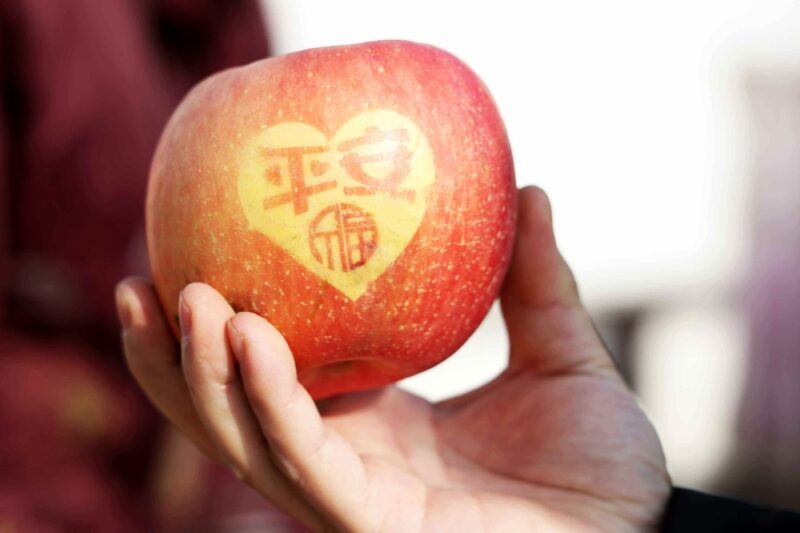
Peace apples are usually inscribed or decorated with a message
Peace apples are usually inscribed or decorated with a message





